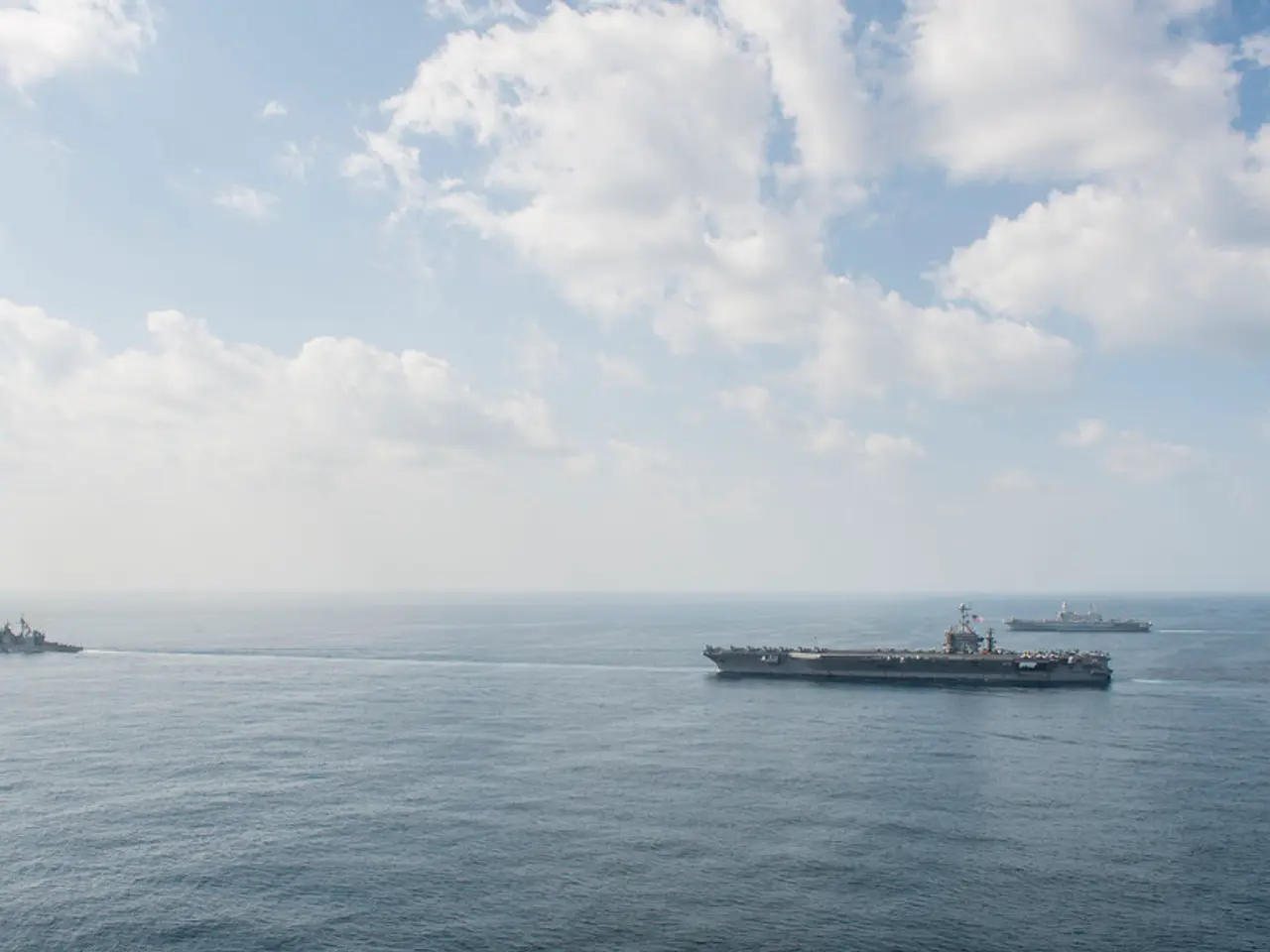Squall Line Explanation: Aerial Weather Overview with Illustrations
Squall lines, long, narrow bands of intense thunderstorms, are significant mesoscale weather systems that can extend for hundreds of kilometers [1][2][4]. Known for their rapid onset and the abrupt changes in weather they induce, these systems demand respect and prompt action to mitigate their hazards.
## Characteristics
Composed of multiple thunderstorms arranged in a linear fashion, squall lines often feature a leading edge marked by strong wind and precipitation [1][2]. Associated with sudden increases in wind speed (often with gusts), sharp temperature drops, heavy rainfall, frequent lightning, hail, and shelf clouds [1][2][4], these systems are visual indicators of approaching severe weather.
Cold pools of air descend behind the storms, reinforcing the squall line and driving the system forward [3]. The systems often have an up-shear tilt, meaning the updrafts are at an angle relative to the surface, promoting longevity and intensity [3].
## Hazards
Squall lines pose numerous hazards, including strong, straight-line winds that can cause significant damage to structures, trees, and power lines, and can be life-threatening for those outdoors [4]. Heavy rain can lead to flash flooding, especially in urban areas [1][2]. Hail may damage property, vehicles, and crops [4]. Lightning poses a risk of injury and can lead to wildfires or electrical disruptions [2][4].
Wind shear, sudden changes in wind speed and direction, are particularly hazardous for aviation, affecting aircraft performance during critical phases like takeoff and landing [2]. Reduced visibility due to heavy rain and blowing debris can make travel and outdoor activities dangerous [2][4]. Occasional tornadoes can form along squall lines, further increasing the risk [4]. Squall lines can disrupt air traffic, requiring rerouting or delays to avoid hazardous conditions [2].
## Safety Precautions
To ensure safety, it is essential to move indoors immediately when a squall line with a shelf cloud is approaching [4]. Staying informed by monitoring weather alerts and warnings from local authorities is also crucial [4]. Outdoor activities should be avoided, especially near water or open areas, where wind gusts can be dangerous [4]. Remaining sheltered until authorities declare it safe to return outside is also advisable [4].
Tornadoes may be hidden in heavy rain, so it's important to stay vigilant and pay careful attention to tornado warnings when there's a squall line [4]. Gust fronts, the leading edge of colder air descending from storms, can trigger thunderstorm formation even far ahead of the main line [4]. Squall lines often form where the right ingredients come together, such as moisture, lifting mechanism, atmospheric instability, and wind shear [4].
About 25 percent of all tornadoes in the United States come from squall lines [4]. Wind shear is important in helping to sustain the squall line by tilting the storm [4]. Squall lines usually travel quickly, often at speeds of 40 to 60 miles per hour [4]. The FAA Advisory Circular AC 00‐24C suggests maintaining at least 20 miles of separation from storms with severe or intense echoes, especially under the anvil of a large cumulonimbus [4].
Radar detects moisture, not turbulence, but areas of strong return generally also point to turbulence [4]. Lightning strikes are more common around squall lines, especially when flying around these systems, even if the air seems otherwise clear [4]. Hail can damage vehicles, homes, and aircraft components, posing a threat to both ground operations and in-flight safety [4].
To minimize the risk of a lightning strike, seek shelter in buildings or vehicles with hard roofs, stay away from open areas and tall objects, and refrain from using corded phones or electrical appliances [4]. By understanding the characteristics and hazards of squall lines and taking the necessary safety precautions, one can mitigate the risks associated with these powerful weather phenomena.
In the realm of environmental science, squall lines, extended bands of intense thunderstorms, are noteworthy for their links to specific weather conditions, such as sudden increases in wind speed, sharp temperature drops, heavy rainfall, frequent lightning, hail, and shelf clouds.
When studying weather patterns, it's essential to recognize squall lines as visual indicators of approaching severe weather systems, capable of inducing hazards like strong winds, flash flooding, hail, and aviation-related wind shear.








